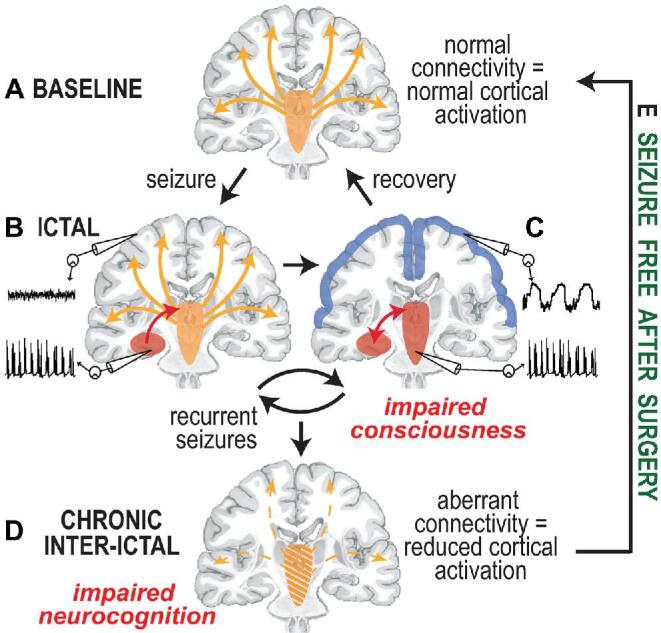Figure 6.

Model for subcortical-cortical connectivity disturbances and recovery in TLE. A, At wakeful baseline, neocortical activation is maintained via direct and indirect excitatory projections from subcortical activating structures, including ARAS, intralaminar thalamus, and basal forebrain. B, During the transition to the ictal period, seizure activity begins in the mesial temporal lobe and may remain confined there without disturbing cortical activity, generating a small consciousness-sparing focal seizure, or aura. C, When seizure activity spreads to involve subcortical activating structures, the normal excitatory input from the subcortical regions to the neocortex is perturbed, and the neocortex defaults to a sleep-like inhibited state, resulting in a consciousness-impairing focal seizure. D, Over time, recurrent consciousness-impairing focal seizures may lead to progressive dysfunction of subcortical activating structures and aberrant connectivity between these regions and the neocortex, leading to a chronic state of reduced neocortical activation and impaired neurocognition. E, Seizure freedom after successful epilepsy surgery may allow recovery of certain subcortical-cortical functional connectivity pertubations. Adapted from Blumenfeld and Taylor,46 with permission and courtesy of Hal Blumenfeld.
